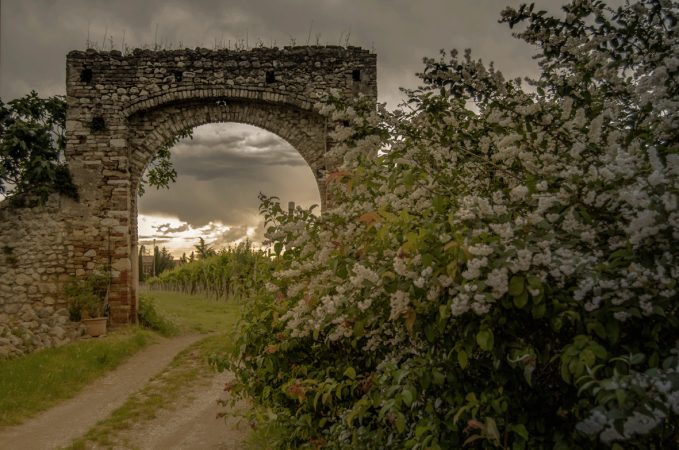
Like the gnarled trunk of an old vine that, undisturbed, continues to grow and bear fruit, Campomasua knows how to evolve in time and deliver new shadings of flavor with the passage of time.
Varietal: 70% Corvina, 25% Rondinella, 10% Corvinone
Appellation: Amarone della Valpolicella Classico DOCG
Production Zone: San Pietro in Cariano, Veneto; alt 250 mt a.s.l.
Soil: Light, chalky and full of stones
Vinification: Hand harvested. 4-6 months air drying of the grapes on racks in well ventilated rooms. Vinified at the end of January. 45 days of skin maceration. The fermentation is affected by the cold winter temperatures and takes up to 3 years completing in wooden casks.
Maturation: 36 months, part in oaken casks and part in tonneaux, and a final 6 months in the bottle


- Dense garnet red color, very intense and luminous. Sweet hints begin to emerge, reminiscent of tiny dark fruits, the petals of wilted violets and roses, cocoa powder, prunes and walnuts. In the mouth it is rich, strong, flavorful, balanced and highly refined.
- Campomasua pairs elaborate dishes, but thanks to its rich flavor it is even more satisfying by itself or paired with dark chocolate.
- Azienda Agricola Venturini is located in San Floriano which is a village in part of the town of San Pietro in Cariano (Verona). It was established in 1963 and continues to grow thanks to love, experience and hard work of three generations.
- Beginning with Grandfather Antonio who passed it onto his son Massimino, who in turn placed it in the hands of his children: Daniele carefully follows the wine making process, Mirco passionately takes care of the vineyards and Giuseppina manages the business sector.
- Venturini owns 12 ha of land: the grapes are grown on the rolling hills of Valpolicella Classica at an average height of 812 feet above sea level. The vines face south-west on terraces held up by stony walls called “marogne” and are supported by “simple” and “double” pergolas.
